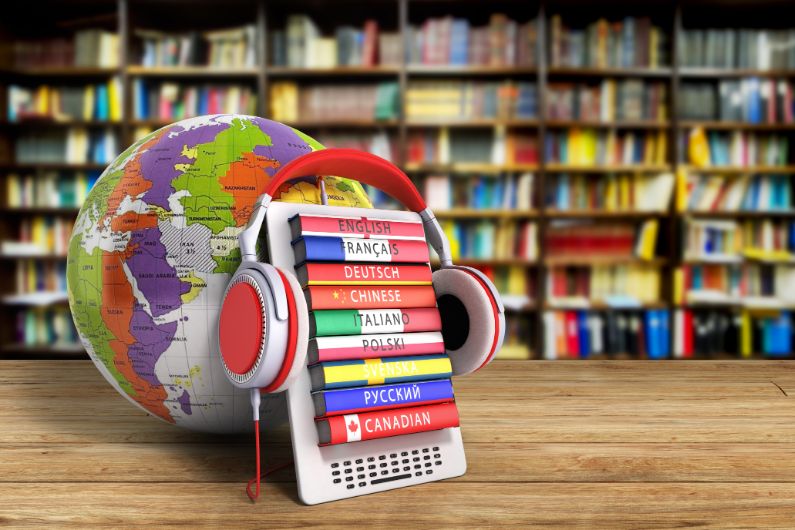Learning a new language can be a thrilling and enriching experience, but one common question among learners is: how long does it take to learn a language ? The answer varies widely depending on the language’s complexity, your native tongue, and your learning methods. For English speakers, some languages are notably faster to pick up due to similarities in vocabulary, grammar, and pronunciation.
What Makes a Language Easier or Faster to Learn?
Before diving into the list, it’s important to understand why some languages are easier for English speakers. Factors that influence learning speed include:
Linguistic similarity: Languages sharing roots or vocabulary with English tend to be easier.
Grammar complexity: Simpler grammatical structures speed up learning.
Pronunciation: Familiar sounds and phonetics reduce the learning curve.
Writing system: Using the Latin alphabet or a familiar script makes reading and writing easier.
With these factors in mind, let’s look at some of the fastest languages for English speakers to master.
Spanish: The Popular Choice
Spanish is often considered the easiest and fastest language for English speakers to learn. It shares a significant amount of vocabulary with English due to Latin influences, and its phonetic spelling makes pronunciation straightforward.
Grammar: While Spanish has gendered nouns and verb conjugations, its rules are consistent and logical.
Pronunciation: Most words are pronounced as they are written.
Usefulness: Spoken by over 400 million people worldwide, Spanish is practical for travel, business, and culture.

Many learners can reach conversational fluency in as little as six months to a year with consistent practice.
French: The Language of Romance and Diplomacy
French shares a vast amount of vocabulary with English, thanks to historical ties. This makes it a natural choice for English speakers.
Grammar: French grammar is more complex than Spanish, with gendered nouns and verb tenses, but still manageable.
Pronunciation: Some sounds are challenging but can be mastered with practice.
Global reach: French is spoken in many countries across Europe, Africa, and Canada.
With dedication, learners often achieve basic fluency within a year.
Italian: Melodic and Logical
Italian, like Spanish and French, is a Romance language and shares many linguistic features with English.
Grammar: Italian grammar is relatively straightforward, with predictable verb conjugations.
Pronunciation: Italian is highly phonetic, making it easier to pronounce.
Culture: Italy’s rich cultural heritage makes learning Italian rewarding.
Many learners find they can hold simple conversations after six months of study.
Portuguese: Similar Yet Unique
Portuguese, especially Brazilian Portuguese, is gaining popularity and is closely related to Spanish.
Grammar: Similar to Spanish but with unique verb forms and pronunciation.
Pronunciation: Brazilian Portuguese has a musical quality but can be tricky.
Practicality: Spoken by over 200 million people, it’s useful for travel and business.
Portuguese learners often reach conversational levels within a year.
Dutch: The Closest Cousin
Dutch is a Germanic language like English, making it one of the fastest languages for English speakers to learn.
Grammar: Dutch grammar is simpler than German’s but more complex than Romance languages.
Pronunciation: Some sounds are unfamiliar but manageable.
Vocabulary: Shares a significant number of cognates with English.
Learners can expect to reach conversational fluency in about six months to a year.
Norwegian: Simple Grammar and Familiar Sounds
Norwegian is another Germanic language that is surprisingly easy for English speakers.
Grammar: Very straightforward with no verb conjugations by person.
Pronunciation: Relatively simple and consistent.
Mutual intelligibility: Close to Swedish and Danish, expanding your language reach.
Norwegian learners often find they can communicate effectively within six months.
Swedish: Musical and Accessible
Swedish shares many features with Norwegian and Dutch, making it accessible for English speakers.
Grammar: Simple verb forms and sentence structures.
Pronunciation: Can be challenging but consistent.
Culture: Sweden’s global influence makes Swedish a practical choice.
Basic fluency is achievable within a year.
Why These Languages Are Faster to Learn
The languages listed above are generally categorized by the Foreign Service Institute (FSI) as Category I or II languages, meaning they require roughly 600-750 hours of study for English speakers to reach professional working proficiency. This is significantly less time compared to Category IV languages like Arabic, Chinese, or Japanese, which can require over 2,200 hours.
The question how long does it take to learn a language is often answered by these FSI guidelines, but individual experience varies based on motivation, learning environment, and consistency.
Tips to Speed Up Your Language Learning
No matter which language you choose, here are some strategies to accelerate your progress:
Immerse yourself: Surround yourself with the language through media, conversation, and travel.
Practice daily: Even 15-30 minutes a day can lead to steady improvement.
Use varied resources: Combine apps, books, tutors, and language exchanges.
Set clear goals: Define what fluency means for you and track your progress.
Stay motivated: Celebrate milestones and keep your learning fun.
Final Thoughts
Choosing a language that is easier and faster for English speakers to learn can boost your confidence and keep you motivated. Whether it’s the romance of Spanish and French or the familiarity of Dutch and Norwegian, these languages offer a smoother path to fluency.
Remember, the journey of learning a language is personal and unique. By understanding the factors that affect learning speed and selecting a language that aligns with your goals, you’ll be well on your way to mastering a new tongue in the shortest time possible.









